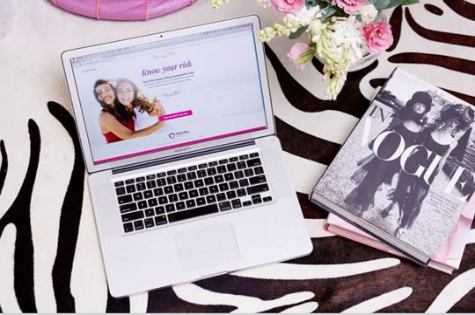Know Your Risk:Prevention is best when it comes to breast and ovarian cancer
Date: February 23 2016

Pink Hope has always had a preventative health message and one of its key missions is to help women across Australia understand their personal risk of developing breast and ovarian cancer.
The health charity created the online ‘Know your Risk’ tool that takes just five minutes to complete, to give women the chance to work out if their family health history puts them at an increased risk of developing either disease.
Australian studies have shown that five per cent of women in the Australian population, or around 625,000 women, are either at moderate to high risk for developing breast and ovarian cancer – this means they have a minimum of two times the average risk of breast and ovarian cancer.
The ticking time-bomb many women don’t know about...
Krystal Barter, who founded Pink Hope after having a preventative double mastectomy at 24 years, has made it her mission to find these women and the new Pink Hope tool will help: “These women are potentially sitting on a ticking time bomb. We have created a ground-breaking ‘Know your risk’ tool, a series of questions that takes five minutes to complete, that will help at-risk women to get to grips with their family health histories and take action.”
Pink Hope recently surveyed over 1,000 Australian women and found that while 59% of them have thought about their personal risk of developing breast and/or ovarian cancer, a huge 66% of women admit they have no idea if their risk of developing either cancer is higher than average woman’s risk.
Krystal says, “If you have a moderate to high risk you can go to your GP armed with this information and discuss the next steps to take any appropriate tests. And, while we don’t want to alarm women or create anxiety, we do believe that this simple self-assessment tool can give women essential health information that can save lives.” The tool was developed in conjunction with The Peter MacCallum Cancer Centre for use by women with no prior history of cancer. It asks women to think about the prevalence of cancer in both men and women in their family, and whether any female family members have been found to carry the BRCA1 or 2 genes which are associated with cancer risk.
“One of the best cancer prevention strategies is to have a community that is informed about their risks and empowered to act as their own health advocate.“
"This simple tool will be a vital stepping stone in helping women to better understand their healthcare needs.“
Dr David Speakman
Chief Medical Officer,
Peter MacCallum Cancer Centre
The ‘Know your Risk’ tool is available at pinkhope.org.au, and Pink Hope has set a target for 10,000 women to use the ‘Know your risk’ tool during February and March.
Katie Pisciotta, a 32-year-old teacher from Melbourne says,
“I was diagnosed with breast cancer at 28. The only experience I had of breast cancer before this was that my aunty had passed away from the disease when I was young. It wasn’t until my own diagnosis, that I found out that I had inherited a gene mutation from my father’s side.“
“I wish I had known more about how my family history of breast cancer put me at an increased risk. This knowledge could have enabled me to make more informed decisions about my health," Katie
The average woman’s risk of developing breast cancer is 12.5% and ovarian cancer is 1.2% up to the age of 85.
|
||||||||














__small.png)










